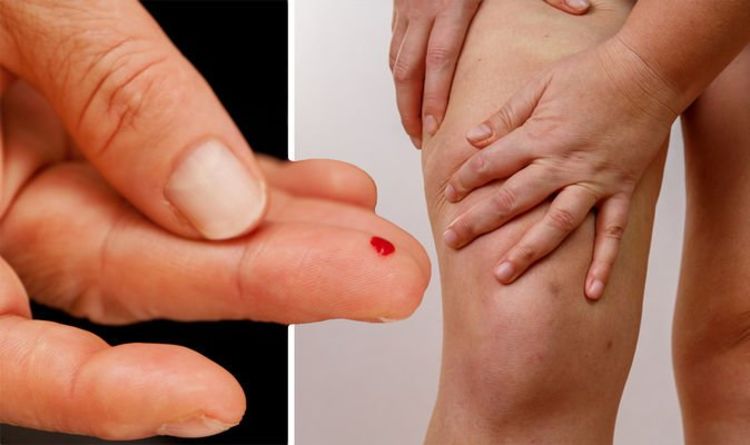
High blood sugar, also known as hyperglycaemia, is where lies the danger of diabetes. Chronically high blood glucose can damage nerves, setting the stage for diabetic neuropathy, which in turn can lead to amputation. One lesser-known sensation in the lower part of the legs could be signalling that sugar levels are high.
In its advanced stages, diabetes can manifest in a multitude of ways, but complications are often concentrated in the legs and feet.
This is because diabetes-related damage often affects nerves that sense touch and pain, such as those in the feet.
According to the Joint Chiropractic, itchy legs, and feet may be a common complaint among diabetics that may result from periodically high blood sugar levels.
While some cases are mild, others can be severe.
READ MORE: Diabetes: The serious warning sign on your toenails of ‘prolonged’ high blood sugar levels
“A reoccurring, overwhelming itchiness in your hands, feet and lower legs is another lesser-known symptom of diabetes,” explains the health body.
“High blood sugar levels decrease the blood circulation to your extremities which causes them to feel itchy and dry.
“If you are using moisturising lotion on a regular basis and the itchiness doesn’t get better, have your blood sugar levels checked.”
There are a host of other possible causes for excessive itching, so diabetes may not necessarily be at the root of the issue.
DON’T MISS:
Aside from poor circulation, the American Diabetes Association explains that other causes for excessive itching include yeast infections and dry skin.
If left untreated, high blood sugar levels can damage the organs and nerves so severely that amputation is required.
Nine in 10 cases of amputation are linked to type 2 diabetes, which is when the body struggles to produce enough insulin or cells become resistant to it.
Unfortunately, two dozen people a day have feet and toes amputated as a result of diabetes.
Other sensations hinting at high blood sugar levels include pins and needles, or a burning sensation in the feet.
Cuts and sores that take longer than average to heal could also be signalling high blood sugar levels.
The NHS has long made diabetes prevention one of its priorities, but alarming figures show cases of diabetes have doubled in the past 15 years.
During the pandemic, diabetes checks fell by 7.4 million, putting patients at risk of life-threatening complications, according to researchers at the University of Manchester.
Those who are left untreated face a greater risk of complications including heart attack, stroke and kidney failure – to name a few.
But researchers say 90 percent of cases are lifestyle-related, with obesity at the forefront of causes.
Doctor Martin K Rutter, from the University of Manchester, said: “Health checks for type 2 diabetes are essential in the long-term management of the condition.
“As we recover from the pandemic, our research will help UK healthcare services focus their effort on how to provide support for people living with diabetes who have been most affected by changes in the way that care has been provided.”
Published at Thu, 18 Nov 2021 05:01:00 +0000
Diabetes: The ‘lesser-known’ warning sign of advanced blood sugar damage in the lower legs













